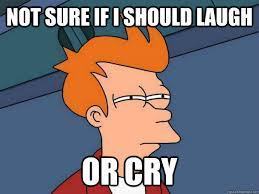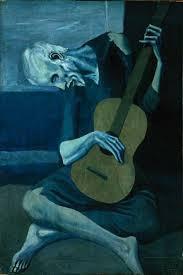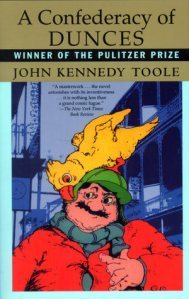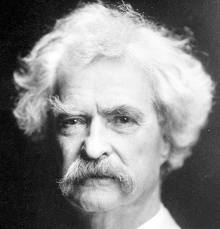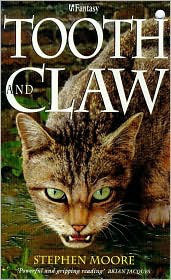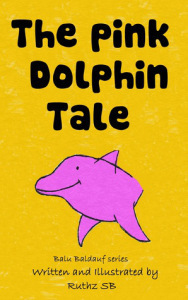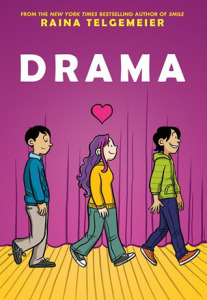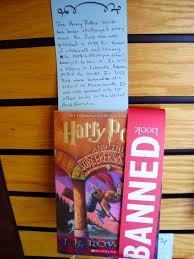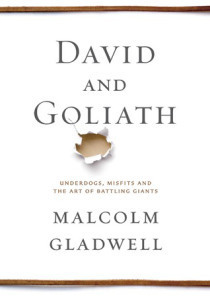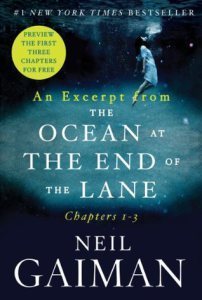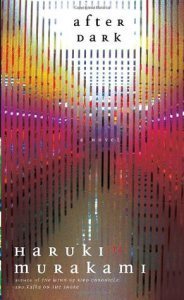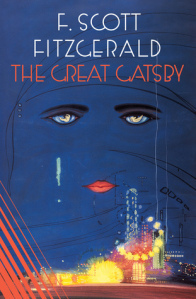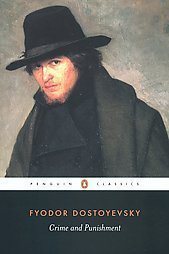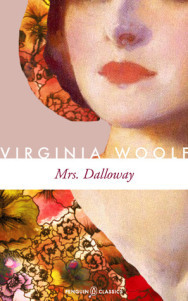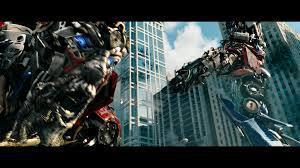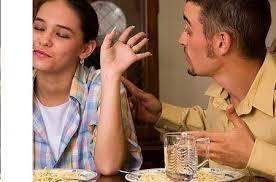Tim Learn's Blog, page 24
May 4, 2015
Top Three Ways to Strengthen a Scene
Top Three Ways to Strengthen a Scene
One of the self-published books I’m reading now reminded me of these little tricks that took me an ungodly time to figure out and use in a more efficient manner. Many times, after you’ve written a particular scene, some inflexible part of our brain only wants to fix and edit the lines as they are. In this way, the writing-hacks below are a good way to shake things up and tighten a loose, dragging scene. So here goes.
1) Cut
This actually has many different meanings, so let me chop it down into easier to digest pieces.
a) beginnings
Far too often, after writing the scene, we need to focus on how it opens. If it starts out weak, the reader will drag and skim. Authors don’t want this. So to fix it, the best thing to do is chop a little of the beginning and this makes complete sense. Usually, when I start writing a scene, I have a particular goal that needs to be achieved but no idea in what way I want it to come out. Later, in the editing process, I save the reader a lot by just chopping off a paragraph or two, getting right to the meat of what’s going on.
b) dialogue
Like above, most dialogue when it hits the page, comes at a time when the writing side of my brain hasn’t kicked in and started focusing. For that reason, skimming past the first couple lines not only gets to the exciting part, but also leaves a little of the beginning of the dialogue up to the reader to fill in.
c) endings
This time, the notion is completely the opposite. By the end of a scene, your writing brain should be churning outs lines with little prodding, but unfortunately, it usually isn’t the best judge. Thus, while re-reading, locating where the most poignant part of the scene lands is crucial. Once you find it, the best thing to do is to let a little bit more flow, and then cut the slack. If you drag an ending out, the reader will have nothing left to look forward to in the next chapter, and will keep leaving your book without that sense of urgency that causes so many of us to read through the night.
2) Rearrange
This one’s simple but took me forever to get the hang off. When going back through a chapter, check what order the events are presented. Though it may seem logical, and anyone who reads it may understand it clearly, that doesn’t mean it is laid out in the best way. Sometimes moving one part of dialogue forward, or one emotional explosion till later allows the flow of the chapter to keep the readers attention hooked. Too much at one point and too little in another loses your audience just as much as non-stop hitting them in the face with big action. Chapters and books should have a little roller-coaster feel to them. The ups-and-downs make it worthwhile, even in scenes.
3) Cut
Wait! Didn’t you already have this one? Yes, but this is different. Sometimes, the best thing I found to do is to chop a certain aspect out of the scene or leave something unsaid but communicated between characters through body language. This tightens the scene as well because too much dialogue can start lending a ‘talk-heads’ like element to it, and this is just as much a reader killer as well.
I use all of these regularly now and am still shocked (embarrassed?) that I had no clue about them before. Due to this, if you have a writing/editing-hack that works wonders for you—please, please, please share! More tricks in the bag always help.


April 30, 2015
Top Three Failures in Humor (when it comes to writing)
Top Three Failures in Humor (when it comes to writing)
What is the impetus for this post? Well, dishing out my opinions on self-published books, I’ve encountered many faulty attempts at humor, and it seems authors are sometimes a little short-sighted to what they’ve done.
Again, this is something I’m guilty of—and probably most of us are. When it comes to humor, we think, I know what’s funny. And that may be true, but we tend to forget the medium matters as well. I would never decide to render Picasso’s Blue Guitar (one of my favorites) into writing. If I did, I’m pretty sure it would suck, or turn out to be a static piece describing it, which would suck too. Words can only do so much. This goes the same for humor. Things get lost in translation. So here are my top three bad translations of humor into writing.
Funny conversations had with friends or family
I’ll give you an example. If anyone still knows the movie ‘Swingers’, remember the part where they order food, and the delivery guy comes. At that moment, Vince Vaughn tells Jon Favreau’s character to let the guy in, asking, “Is he pretty? Is he brown? Have him take his shoes off!”
I laughed my ass off at this part. This is spot on what guys to do each other—humiliation for the sake of comedy. However, take those same lines from above and put them in your novel and…something else comes out. A lot of times this kind of dialogue hits negatively, sounding confrontational, if not openly bigoted like the lines above.
Why does it fail? Context. When guys do this to each other, we can tell from the tone of voice and the manner of expression what the intent of said discourse is. But, when it comes to writing, all of that tacit information is thrust solely upon the dialogue, which usually is not strong enough to carry the weight. Some might add explanatory sidenotes to set the atmosphere or give detail to what is going on, but this too ultimately falls flat and draws us out of the scene, which no writer wants.
Best thing to do: rethink it and present it in a different way. I’ve had to do this multiple times and have always found other avenues to making the characters appear comically and light. Sometimes the best thing to do is dump it.
Body gags
A recent book I read had a kid hide an important canister in his pants without thinking. When his friends saw it they started laughing at the position of it, eluding it to being the young boy’s possible ‘immense’ privates. Though the author danced around it, it came off childish with such young protagonists, and the overall comic effect failed. In fact, it reminded me more of locker scenes from movies where a guy might shove a banana down there and parade around. Haven’t we seen this lackluster humor enough?
Why does it fail? As hack-neyed as this joke was, most jokes in this fashion won’t work well because they are ‘body gags.’ As an American, I don’t particularly enjoy these kind of jokes—ie. someone falling down—but here, in Korea, where I currently live, this is gold, and it even makes me chuckle sometimes. Why? The physicality of it. The extreme lack of grace and the wry facial expressions these comedians put into it are one hundred percent timed for the maximum effect. When reading, it is much harder to pull of such silliness.
Best thing to do: Making us laugh at such ridiculousness is hard—granted, but not impossible. I’m reminded of Ignatius Reilly form Confederacy of Dunces. Look what O’Toole did with him. He painted every detail of the character into such an absurdity that any action he did came off comical. It doesn’t have to be slapstick, but the entire character has to somehow imbue this gracelessness to present it just right. Other characters, as other comedians, can’t pull it off.
Exaggeration
This reminds me of a childish book from a while ago. In it, the author wanted to make the circumstances so outrageous that the reader would end up laughing. What he wrote didn’t end up this way, and I kind of picture him lying in bed reading it, getting a grand kick out of himself. I only say this because I heard that’s what James Joyce did with Finnegan’s Wake, which upon release, left many questioning his sanity.
Why does it fail? Our worlds of humor sometimes only land for a select few, and at other times, only for ourselves. True, Finnegan’s Wake has some funny parts in it. That doesn’t mean we get every joke old Joyce was in on–same too, with the outlandish rant the book I read above had. Personally, I feel the author took it one step too far and he lost control of it. Humor is also knowing when too stop.
Best thing to do: Look at the greats and…copy! Yes, copy! Not the exact words but the degree. Think Huck Finn where Tom Sawyer devises one of the most ridiculous plans to hatch out Jim the slave. With every new aspect added, it gets more and more entertaining. I laughed out loud in many places, but this is also because Tom grounded it. It was just crazy for crazy’s sake. For all comedy, set-up and timing are important. Wilde had it. Vonnegut had it. Read enough…and something’s got to get through.
If there’s anything I missed, please, please, please, comment below. Thanks much!


April 28, 2015
Tooth and Claw
Tooth and Claw
By Stephen Moore
Rating
Synopsis
With the new treaty between nations, a particular town finds itself in a no man’s land, and all its inhabitants are escorted out by force. They must gather up their things with little notice and ultimately leave many things behind, including their pets. Left without humans, Byrna, a house cat, tries to adapt to this new world. She sees many deaths along the way, until finally coming face to face with a living nightmare.
Prose/Structure
There are a thousand books out there with animal protagonists. Many of them get it wrong. Here, we are instantly given very life-like characters, saving this story from the doldrums of its weaker brethren. Byrna is a powerful and relatable figure, thrust from her safe, house cat life into the outer, human-less world. In this way—a departure from old and trusted haunts—this book takes on a feel in the likes of ‘Watership Down.’
Nonetheless, the writing is immaculately done, and it is hard not to be impressed by it. The author definitely has his own voice, style, and flow, pitching lines that encapsulate this strange world perfectly.
Indeed, everything in their lives, everything they were, had come from man. Even their names were only sentimental parodies of men’s own—or else some clever trick played with human words for their own amusement…
Or
Beasts with legs as thick as lampposts, and big patches of black-and-white hair splashed across their massive bodies that seemed to blot out the daylight.
On top of this, for a book categorized as ‘Kid’s Lit’, there are remarkable amounts of good vocabulary and tightly strung sentences. This said, my next remark comes more as a warning to the author than an act of criticism. His semicolon use is exorbitant. For me, it doesn’t hinder the read, but those sticklers out there might explode. See below.
Byrna’s fur bristled; a new, pungent odour stung her nose, soured her tongue, and drove away all else.
Or
A low purr rose up in her throat; this was a stale scent, yesterday’s smell, and without threat.
My real qualms arise with the narrative. As an adventure story with cats and dogs—it’s good! But there are times when the author goes overboard with description, detailing each little action and scene. This really drew me out of it, causing me to skip ahead to more vital sections.
Also, though adventurous, the story ultimately revolves around the Dread Booga—a scary creature of the author’s concoction. It’s wonderful and imaginative, but, besides some brief interludes, doesn’t actually make its appearance until the last five chapters or so of the book. At this point, the monster becomes such a threat that everyone is terrified, but…there seems to be little evidence of this desperation. What suddenly drives them to revolt? A slow presence and string of murders would have been more enticing, if not haunting.
Overall
It was a good read—plain and simple. Like I said, the heavy description dragged and the loose narrative with only a final, clinching element made it fall a bit flat in the end, but in no way does this detract from it if read as an adventure book. Like Watership Down, it is a series of escapades that lead up to some unique, new world, like a Pilgrim’s Progess…but for cats and dogs.
On a side note: if you enjoy this book, you’ll be happy to hear, the author, Stephen Moore, will be publishing his next book soon with one of the big publishers. So good luck to him as well!


April 26, 2015
Clarification: My ‘Opinion’ System
My Opinion System
A recent article I read has drastically shifted my understanding of what makes a book review. In essence, without a large, developed process and thorough vetting, it claims we blog-reviewers are nothing more than opinion-makers. Though I don’t agree with all of it, certain aspects do make some sense. For this reason, I chose to post my criteria when judging a book.
As most sites use a five star system, I chose to do so as well to make transferring my ratings easier. In this way, my criteria for each ranking is listed below.
This is for a book that is truly surprising and unexpected. If a book receives this score, it means I had a hard time putting it down and found few, if no flaws. It is reserved for the highest of books. Therefore, no author should believe I will nonchalantly hand one out to each book I read. Five stars should be difficult achievements, and that’s what I hope to express with this ranking and by putting it on my homepage to promote.
This is for good books! In no way is a four-star opinion an insult or should be taken as a failure. Four is good too! In this category, I usually pick a book because the story is paced well, and the overall presentation is good–meaning well-written. However, to get a four-star opinion means there were some things wrong, such as weak sections, rushed areas, or in some way my expectations were disappointed.
Here we find okay books. These books have potential and could easily be fixed into ‘Wow!’ books. Mainly, they have character problems or POV conflicts. These books may be slow starters or just don’t have all the elements in sync. A lot of times, this category represents books I wished the author had taken a little bit more time with their editing. By saying this, I’m not referring to grammar or the writing. What I mean is the story itself and other elements of the plot.
These books are messes. They need complete overhauls. There are inconsistent POV shifts, weak or repetitive dialogue, and most likely, completely useless characters on top of a whole bunch of other problems. If a book gets an opinion like this, it means I had to strongly push myself to get through it, and sometimes–hopefully in the rarest of cases–couldn’t even finish. I will try to post when I finally called out defeat for these tomes.
One Star:
Unreadable! A one-star and five-star opinion do have one thing in common: they are both rare. However, just like how the magic for a five-star opinion has to come together, so too the complete destruction of a book has to happen in order to earn this ranking. That is not to say it is impossible. A book like that will have bad grammar, mismatch subjects, incomplete sentences, and more. In other words, it will look like it was written in crayon by a four-year-old.
In the end, I hope this clarifies in what manner I go about reading the books I judge. Any comments are welcome.


April 24, 2015
A Fraud
For anyone who likes Dostoevsky or Dickens, this is a must read! I picked it up last year, it blew me away. On top of that, it’s true. It’s a bit long but reads like a story. Enjoy!
When Dickens met Dostoevsky


April 23, 2015
The Pink Dolphin Tale
The Pink Dolphin Tale
(Kids Book)
By Ruthz SB
Rating
Synopsis
The World listens on as Bebe recounts her tale of the pink dolphin—a story of growth, change, and self-realization.
Prose/Structure
The hardest part with any book is determining in which way to judge it. You need to be in the right mindset and understand the target audience. I have a young daughter, so I thought it would be easy to slip into my ‘kid-reading mode.’ But this book is of a different breed.
‘Bebe moved her to a bathtub, but the next day the pink dolphin grew so big that the tub could no longer fit her.’
This phrasing is repeated throughout the middle of the book with slight variation, and as the reader, get a little monotonous, but that’s where it shines. This book isn’t supposed to be one of those rollicking romps into imagination or a thrilling twister with a play on words and sounds. This book seems built for the early reader—simple, colorful, and packed with a message.
Overall
I got what the book was aiming for: easy reading for its young audience. My daughter is just on the verge of diving into books like this and there is definitely a niche for it. If you remember back to those first days of reading, you might recall the joy of simple, light books such as this. The only reason I gave it a four-star review is because I just didn’t go ‘wow!’ over it. In every other way, it’s a wonderful read…and as it appears the author publishes some of her books in German too. In this way, it could even tap into the beginner readers of another language. Sweet!
If you want to check out the book, click here.


April 21, 2015
The Fine Line of message
The Fine Line
of message
Every book, purportedly, has one: a message. How it gets it is different. Some authors, like Stephen King, write the story first and only afterwards go through to find what themes and ideas their brain implanted while writing. Then, they highlight and emphasize. Others—architects of writing—manufacture and meticulous devise the plot around a central moral, idea, whatever. For me, I’m a little bit of both.
But what happens when this message isn’t agreeable? Or for that matter, is it the job of writers to act as a dissenting voice?
This all started for me with a post called ‘2015 ALA List of Challenged Books’ from Ramona Wray’s wonderful blog. I recommend you check it out. The funny thing about these lists is that they actually draw attention to books people would rather not have attention drawn to. It’s the oxymoron of censorship and banning books, which is every author’s secret dream. Ban your book and the world knows your name. In this way, I met one book: Drama by Raina Telgemeier.
On its Amazon page, I trolled the one-star reviews—she’s garnered many—and found parents are flabbergasted by the homosexual storyline. They feel a ‘middle school’ book should not discuss such a topic without having a warning on the cover for unassuming parents. The thing is: I read this book, and I wasn’t offended.
What did offend me? Another recent read has sat on my mind for weeks now. This is not because the message is shocking or aberrant. In it, an overbearing, know-it-all father—who actually knows nothing—tries to control his wife and daughter—who actually know everything—but ultimately gets trounced by them in the end; thus showing the triumph of the female spirit over male superiority. Truthfully, it was great read, but when it comes to the message—haven’t we heard and seen this before in a million different contexts?
This same idea as been brought against J.K. Rowling’s Harry Potter series, saying the whole collection is merely a rehash of already well-represented views and ideas, but—what a spectacular job of rehashing it is!
Then what’s left?
Authors are pretty much damned if they do, derivative if they don’t.
In the end, we’d all like to write something others can enjoy. If it has a new, breath-taking message—all the better! If not, the most we can hope is that our rehashing gets attention for its good story. Books, like Harry Potter with their re-presented old ideas, are good reads even though they will never get banned. Then again, maybe they will.
Tell me what you think. I’d love to hear it.


April 19, 2015
My Top Five Living Authors
My Top Three Five Living Authors
When I was in university, as an ice-breaker, my professor decided to have us make a list of our five favorite authors. Obviously, this was a small class, and under any other circumstances, a ‘favorite author’ list can tell a lot about a person. However, he decided to append one more detail—they all had to be living. To this, many of us groaned. We were English majors—no more explanation needed. On top of that, our professor was sly. In a roundabout way, he was able to point out that we all needed to read more contemporary authors. Nonetheless, I made my list. Keep in mind, this was back in 2002.
1) Kurt Vonnegut
2) J. D. Salinger
3) Michael Crichton
4) Ray Bradbury
5) Chuck Palanuik
We were lucky. Many amazing authors were still alive, if not producing. As far as my last one, I struggled. As much as I like Chuck’s stuff, I don’t know if I’d rank him high on any of my favorite lists. But this brings me to my current list because if you look at my old one, hopeful you secret, sharp-knowing readers out there have noticed what has happened. If not, below should help.
1) Kurt Vonnegut (died April 11, 2007)
2) J. D. Salinger (died January 27, 2010)
3) Michael Crichton (died November 4, 2008)
4) Ray Bradbury (died June 5, 2012)
5) Chuck Palanuik (Alive and well…as far as I know.)
For this reason, I have decided to revamp my list and see who could fill these sadly vacant spots. Here goes:
5) Jonathon Safran Foer
He exploded in 2001 with “Everything is Illuminated,” following on the thick, detailed style that was very popular and still is for certain authors. In essence, his writing was fun and creative, though, sometimes a bit too gimicky. However, after two novels, he quickly disappeared, popping up again only to write a lackluster non-fiction, anti-meat edict. It was rumored that his next foray into literature was to come out in 2014. We are still waiting, but it is understandable. In the interim, he has had two kids and a divorce. Life gets in the way.
4) Malcolm Gladwell
His work is not really ‘fiction’ but in no way was this one of the restrictions. What I love most about him is that his writing reads not only like a story, but since his first book “The Tipping Point,” his writing style has improved immensely. His latest book “David and Goliath” wasn’t as original as his first three, but it did have that quintessential ‘Gladwell’ POV that makes his books fast and thrilling reads.
3) Neil Gaiman
I’ve been a fan of Gaimen since my teenage years, devouring his Sandman series with all the teenage angst I could muster. Afterwards, I wasn’t sure how I felt with his attempts in fiction, but eventually came around. I had enjoyed his short story collections, but found “Neverwhere” missing the special design his other works imbued. Truly, he is a hit-or-miss author, but I still love his imagination. “The Ocean at the End of the Lane” was brilliant.
2) Audrey Niffenegger
She would be in the number one spot except for the fact that she has so far produced very little. But what she has produced has been amazing. One aspect of her skill is taking very ‘sci-fi’ stories and making them truly ‘literary.’ “Time-traveler’s Wife” was an amazing debut, and her follow-up, “Her Fearful Symmetry” was just as stunning. The latter’s only fault being the side-plot didn’t quite resonate as well as I’d hope, but the main conflict blew me away.
1) Haruki Murakami
Murakami is easily number one. He has earned it through years of great works that have only recently dropped to standard and sometimes below. I devoured his early ones, like “Dance, Dance, Dance,” “Norwegian Wood,” and so on, but felt he really shined in “After Dark,” mainly because it was one of his few steps into third person narratives. However, for me, I’d have to say he began to fall flat starting with “Kafka on the Shore,” despite it being the novel that garnered him the most international attention. If he doesn’t produce another gem soon…I may have to replace him with Ms. Niffenegger.
Somehow, I feel I’m missing someone—one of those authors that upon the announcement of an upcoming, new book fills me with anticipation. If I have, please tell me who.
[contact-form]


April 16, 2015
Top Three Favorite Books
My Top Three Favorite Books
Everyone has their different tastes when it comes to books, myself included. Though this list doesn’t necessarily have to be made, any top three like this does show a lot about a reader’s personality. The opposite could be true to, and will probably be another post at a later time. However, this one is about my favorites.
***Side Note***
I’ve added next to each title the number of people
who gave these books one-star reviews on Amazon.
I always find it interesting to know how greatly
other’s opinions differ from mine.
3) The Great Gatsby (239 one-star reviews)
Anyone who has read a little bit of my blog will have noticed I use this book often for my comparisons. It’s not surprising why. It is one of those books, for me, that still rings as a landmark or turning-point in my life as a reader as each one of these books on this list signifies. For this one in particular, I had to read it as part of an English correspondence course in high school. Easily, it blew me away. I didn’t know an author could write like this. On top of it, Gatsby, the man himself, changed my view of what a person could be. I don’t know about the rest of you, but after reading this book, I wanted to be ‘Gatsby.’ Only now, in my middle age, do I see how disappointing I am to that dreamy teenager and maybe even to Gatsby himself.
2) Crime and Punishment (69 one-star reviews)
Again, this book came and changed my view of the world. It entered my life by accident while I was very sick in university. I knew I’d have some time on my hands with summer vacation between my freshmen and sophomore year, so I picked up the mad Russian for some ‘light’ reading. It took me five days to finish it, which, looking at the page count, I did not think possible beforehand. Besides being a book that set standards with motifs that have been ripped off every since, it defined, for me, youthful thinking and defiance. Clearly, I read it at the right time.
1) Mrs. Dalloway (31 one-star reviews)
In no way was this list meant to be chronological, but surprisingly, it is. I stumbled upon this after my semester abroad. I had little money left over, was heading into my final year of university—my fifth!—and Woolf jumped into my life. I reread it voraciously, underlining nearly every sentence. Again, I had no idea a human being could write this way, and, on top of that, still have their readers understand it. I’ve read Joyce—and enjoyed him—and have heard Woolf felt eclipsed by his genius, but in no way do I feel he bested her. Mrs. Dalloway was a thousand times more enjoyable than any of his books. Though, also a million times more readable as well.
Honorable Mention: J.D. Salinger (Catcher in the Rye) (423 one-star reviews)
Even though this is supposed to be my top three books, J.D. deserves to be on it. He is not a book; however, his writing style and content seem to me like an ever-present background that other writing juxtaposes. He is the green screen for weather reporters—always present, rarely noticed. Though all of his writing is important to me, Catcher in the Rye, I feel, is too often overlooked or registered as some whiny teenage novel, which it isn’t. First, every other piece of writing by Salinger comes with his unbelievably wrought, over stylized sentences that make my head swim. But Catcher is the rare piece that diverges from this. He created a new style for it, one to fit the protagonist, and for this reason I feel many readers overlook it. It is a book about spirituality—not teenage angst. He wrote at a time before teenagers had perfected the art of angst, yet, sadly, we now look at it through our present milieu and overlay far too much of ourselves on it.
Classics in a top three book lists!—not surprising, but I hope some of you agree with my choices. If not, please feel free to add your thoughts below. I’d love to not only hear where I’m wrong, but which ones you feel outrank my own. Thanks!


April 14, 2015
The Fine Line (between show and tell)
The Fine Line:
(between show and tell)
Any writer who’s ever read a book on writing, taken a class on it, or just received a critical review will have heard about the idea of ‘showing, not telling.’ I’m not here to necessarily rehash what many of us already know. Only recently—getting a review that stated I should do more showing than telling—did I realize this is a much more difficult issue to address. Although most of the time you should show your story, at certain points, telling is needed and much preferred. This does not make it any less tricky.
We all know stories are made up of scenes—scenes of dialogue, scenes of action, scenes of emotion. And when we are dealing with key scenes that pertain to the plot or push it forward, it is always best for an author to show, show, show. But a story is more than that.
Ambiguity begins to set in when it comes to summaries. Summaries are telling. There is no doubt about it, and they are needed. If everything were presented in ‘Show’-mode, the weight and intensity of the story would crush the reader. Think Transformer fight scenes where the CGI goes crazy. Like this, we feel overloaded with no pauses to highlight the action. This is partly what summaries do. They connect scenes and give the reader a chance to get ready for what’s coming next.
The difficulty arises when we have to decide what to make a scene and what not to. Some authors decide differently, and it’s a matter of opinion. Certain authors like to show every decision a character makes. They feel that it not only exemplifies the character but also is key to the plot. However, this may not always be true.
Some character decisions are necessary but don’t need to be showed fully to the reader. A good reporting of the event can help move the story to the more important elements of the plot.
For example, in the beginning of ‘The Great Gatsby,’ Nick summarizes how he got to New York City after having participated in the war. Fitzgerald could have shown us Nick’s time in the war, or even the conversation he had with the roommate with whom he rented the house next to Gatsby’s. Ultimately, this roommate would leave and wasn’t key to any parts of the story, so he and this interaction was cut. The first real scene starts when Nick meets up with his cousin and the antagonist, Tom.
Then, what should be done?
Ultimately, you, the author, must decide what is important, but the scene you choose to display should be an exciting one. If the interaction is minimal and not exciting (and you should be able to tell the difference) then summarize it and get to the intense stuff. But know that there will always be someone out there who might have done it differently, and might, in the end, disagree with you.





